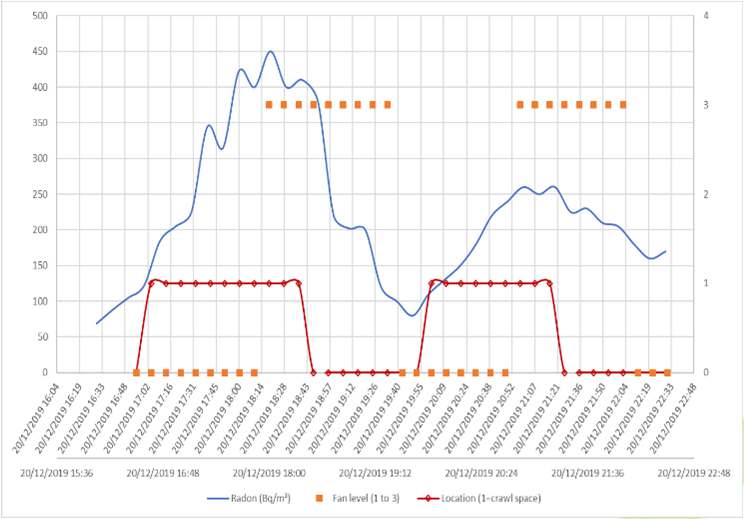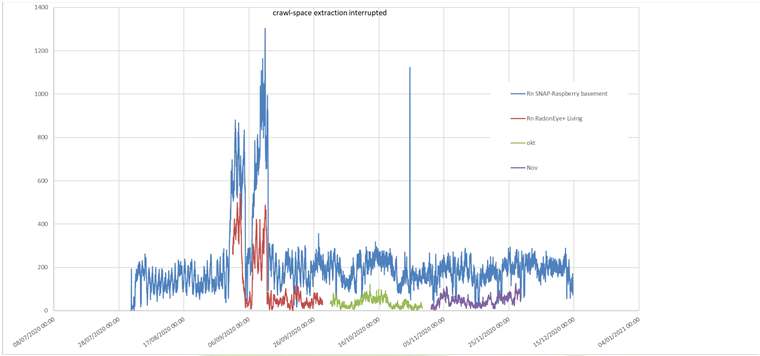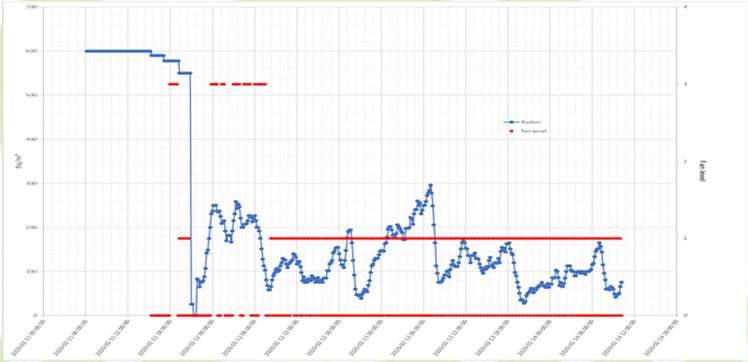Replicability potential evaluation and demonstrative case in Belgium (Action B4)
The response time of the SNAP system was studied by moving a SNAP measurement device in and out a crawl space with high (~400 Bq/m³) radon concentration (Fig. 4).

The SNAP started 1,5h after the radon controller was placed in high radon crawl space, indicating the time needed for radon to diffuse into the diffusion chamber of the detector. The fan stopped 1h after the radon controller was removed from the high radon crawl space. When the radon controller was placed again in the crawl space, the SNAP started after 1h, and it stopped 45 minutes after removal from the crawl space. The experiment indicates that the response of the system is adequate considering the diffusion time of ambient air into and out of the detector. A second test of the SNAP system considers the extraction in a crawl space controlled by a SNAP sensor installed in the adjoining basement (Fig. 5). The system has been adapted to pilot a centrifugal fan used in crawl space extraction. The radon concentration is monitored on the ground floor located living room above the crawn space. There is a clear and good correlation between the living room concentration and the extraction in the crawn-space, piloted by the SNAP sensor in the basement. When the extraction is mechanically interrupted during the experiment, the radon concentration both in the adjoining basement and in the living room above increase rapidly to levels around 1000 Bq/m³.

A second SNAP system has been installed in a basement with high radon concentrations and is piloted by a SNAP sensor in the living room situated above the basement (Fig. 6). It has been observed that the SNAP fan interrupts regularly, even when the radon concentration in the sensor is above the activation level of 200 Bq/m³. A second inconvenience is the instable network connection of the system. It has been observed that it disconnects regularly and without identified reason from the network, after which a complete manual setup must be carried out.

One SNAP system has been installed in an occupied basement (workplace). The system pilots a SNAP fan installed in an external access door. It has been used to evaluate the correspondence between different radon sensors, different SNAP systems (original configuration and configuration adapted for centrifugal fans). The preliminary results indicate the possibility and flexibility to adapt the system to accommodate different configurations (living room extraction or pulsion, crawl space extraction, basement extraction or pulsion). The robustness of communication and connection of the configurations are studied during the current winter period.






